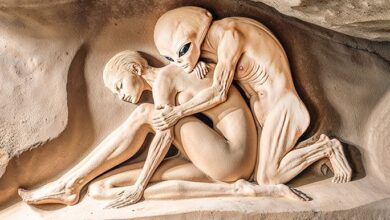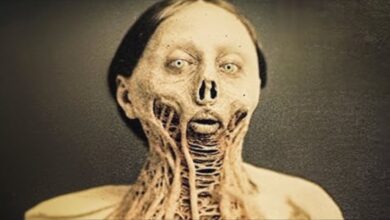SCARIEST Things The Vatican Is Hiding From Us
1. **Medieval Relics**
– **What are relics?**
Relics are usually bones, body parts, or objects associated with saints, such as clothing or personal items. In the Christian tradition, relics are seen as sacred “portals” that make it easier for people to pray to God. It is believed that the closer a person is to a relic, the more likely their prayers will be answered.
– **Devotion to relics:**
In the Middle Ages, relics were considered sacred treasures that had the ability to:
– **Healing diseases:** For example, the bones of Saint Lawrence were believed to help cure back problems because he had suffered so much.
– **Protection and miracles:** Relics were seen as “spiritual doctors” that helped people overcome difficulties.
– **Relic tourism and commercialization:**
– Pilgrims from all over Europe flocked to churches to touch or see relics.
– Churches and shrines designed special structures such as openings or passages under tombs to give believers the closest access to relics.
– Commercialization of relics led to the sale of “holy relics” such as fake vials of holy blood (which were actually just red water).
– **Questionable authenticity:**
Relics were frequently counterfeited or stolen. For example, a famous story tells of the monks of Glastonbury claiming to have brought the remains of St Dunstan from Canterbury, when in fact the bones were still in Canterbury.
—
2. **The Legend of the True Cross**

– **The Journey of St. Helena in Search of the Cross:**
– In 326 AD, Helena, the mother of Emperor Constantine, set out for the Holy Land to find the Cross of Jesus. She was called the “first archaeologist” despite not having modern tools.
– After excavating under a pagan temple, Helena discovered **three crosses**. To determine which one was the True Cross, she performed a test: a sick woman was healed when she touched one of the three crosses.
– **The Popularity of the Cross Pieces:**
– Helena brought back pieces of the Cross and distributed them throughout the Roman Empire. These pieces quickly became famous for their healing and miracle-working abilities.
– However, over time, the number of “Cross Pieces” is said to have increased significantly. The 16th-century reformer **John Calvin** once quipped that there were enough pieces of the Cross to fill a ship.
– **Authenticity today:**
The Vatican and many churches around the world claim to own pieces of the Cross. However, the authenticity of the relics is still controversial.
– **Remains of St. Valentine in Glasgow:**
– In 1868, a French family donated a wooden box containing **the arm bone of St. Valentine** to the Franciscan monks in Glasgow, Scotland.
– The relics are now on display at the **St. John Duns Scotus Chapel** and attract people to pray, pray for love and even propose on Valentine’s Day (February 14).
– Glasgow calls itself the “City of Love” because of this relic.
– **Dispersion of Remains:**
At least **10 other locations** around the world, including Rome, Dublin and Vienna, also claim to possess some of Valentine’s remains.
– **Who was Saint Valentine?**
– There may have been **more than one Saint Valentine.**
– One legend holds that he was a Roman priest who secretly married couples, despite the emperor’s ban.
– Another story has Valentine healing the eyes of a jailer’s daughter and signing a letter “From your Valentine”, giving rise to today’s romantic message.
– **The Origin of Valentine’s Day:**
The holiday replaced the pagan Roman festival of **Lupercalia**, which included rituals such as animal sacrifices and fertility ceremonies.
—
4. **Devil’s Footprint**

– **Legend of the Munich Cathedral:**
– In 1468, the architect **Jorg von Halspach** signed a contract with the devil to build a church that would not let light in.
– After the church was completed, the devil entered and was initially pleased because he could not see the windows. But after taking a few more steps, light flooded the church, causing the devil to become angry and stomp his foot, leaving a footprint on the floor.
– **Authenticity of the story:**
– The church once had a large altar covering the main window, which may have been the origin of the legend.
– The current footprint is a restoration after renovations, especially after World War II.
—
5. **Jesus’s Diapers**

– **Location and significance:**
– A portion of Jesus’ swaddling cloth (considered to be a diaper) is kept in the cathedral in **Dubrovnik, Croatia** and displayed in an elaborate silver case.
– Another set of diapers, called the **”Vindel relic”**, is kept in the cathedral in Aachen, Germany and is only displayed once every 7 years.
Symbolism:
The swaddling cloth is seen as a symbol of Jesus’ humility and humanity, emphasizing that he was truly human.
Some legends say that Joseph used his own socks as diapers because the family did not have cloth.
Medieval Cultural Importance:
Swaddling was once considered essential because it helped children develop properly and demonstrated family care.
**6. ** **Jesus’ Relics**:

The worship of relics of Jesus, including strange things like “diapers” and even “Jesus’ foreskin”, shows that religion can be quite unique.
**7. The Buddha’s Tooth**:

The Temple of the Tooth in Kandy, Sri Lanka, houses the Buddha’s canine tooth. According to legend, a monk secretly removed the tooth after his cremation. The tooth became an important symbol, protected for centuries. Although the Portuguese claimed to destroy it in the 16th century, they actually only destroyed a replica. Today, the tooth is worshiped in the temple with great ceremony.
**8. St. Januarius’ Blood Miracle**:

The blood of St. Januarius in the Cathedral of Naples is said to liquefy three times a year. Many believe this event predicts the future, especially when the blood does not liquefy before a major disaster. Although science explains this phenomenon through the property of “thixotropy” (liquefaction when shaken), the people of Naples still consider it a divine miracle.
**9. Joseph Smith and the Seer Stones**:

Joseph Smith, the founder of Mormonism, used “seer stones” to translate ancient golden tablets that he believed were guided by God. These stones, along with the “Urim and Thummim,” are said to have helped Smith see and translate the “Reformed Egyptian.” The artifact is now on display at the Church History Museum in Salt Lake City.
**10. The Immaculate Conception**:

In 1854, Pope Pius IX officially declared the “Immaculate Conception,” meaning that Mary was born without original sin. This reinforced Catholic belief in Mary’s special role in God’s Plan.
**11. Dragon Bones in Venice**:

The “dragon bones” hanging in the church of Santa Maria Assunta in Venice are associated with the legend of Saint Donatus slaying a poisonous dragon. The bones are actually large animal bones such as whales, but still attract curiosity because of the legendary story.
—
These relics are both historical and religious, sometimes blending myth and reality, creating a mysterious appeal for believers and tourists.








